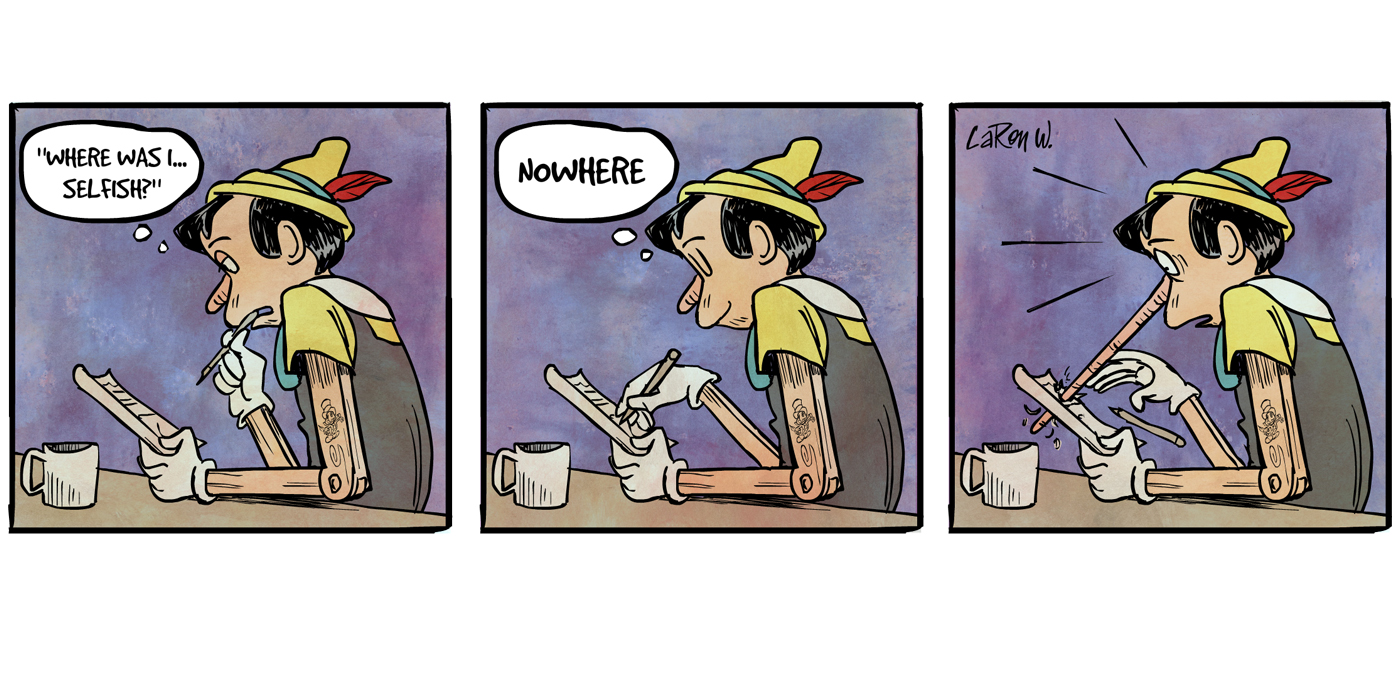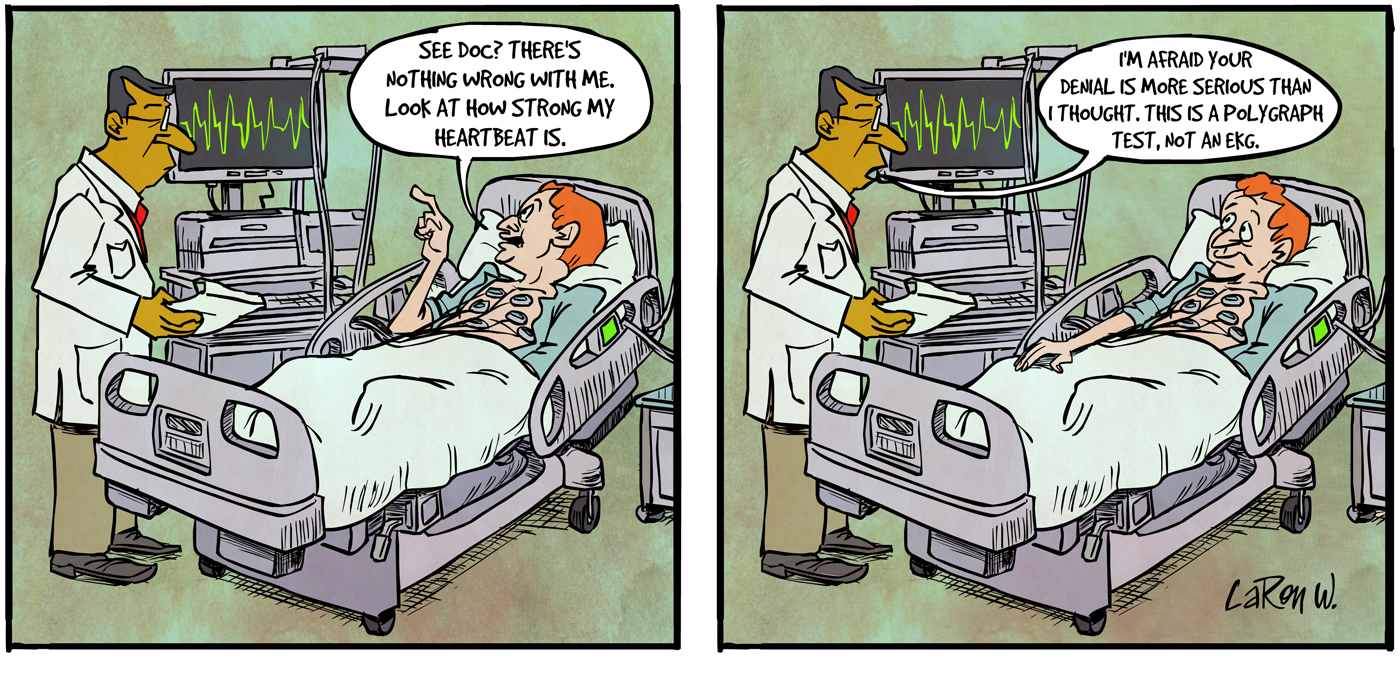Part Two: The 1935 Akron Experience as a Program for Lust Recovery
The December 1999 issue of Essay contained the first part of Roy K.’s talk in Cranford, NJ on November 6th titled “A New Look at Lust Recovery—Part One: Stages of Lust Recovery.” This is Part Two, revised to reflect what we’re learning from continuing experience with participants in the surrender.
[One has to approach the subject of lust recovery with humility, bearing in mind the ancient wisdom, “Therefore let anyone who thinks that he stands take heed lest he fall.” Regardless of any stage of my own lust recovery, I know, with the alkies of 1935, that I am not immune from slipping back any time I choose. The stages of my own lust recovery lead me away from any idea of “cure,” or dependence on self and others, to more and more dependence on the love and presence of God. Maybe that’s why humility plays such an important part in our Seventh Step. —rk]
When we talked about stages of lust recovery [Part One], we concluded that the love of God was pulling us on into deeper and deeper awareness, surrender, and victory over lust—our incredible hope and joy. Now let’s talk about the practical how-to. Now that we know it’s possible, how can we receive that grace, how can we stop lusting? And the first question is, do we want to stop? Do we want to stop drinking?
Some of us may despair after hearing about what’s possible in lust recovery, feeling the impossibility of it all. The danger in discussing the stages of lust recovery and even thinking about freedom from the looking, sipping, and drinking can be terrifying, can’t it? How can we achieve this when we know we’re powerless in ourselves to do it?
Matter of fact, just talking about these stages can load us up with more “Thou shalt nots.” And we’re back to recovery by works of the law (or works of the Program), instead of the grace and power of God. Back to more self-striving, thinking we’ll have to rachet up our resolve all the more in trying to stop lusting or in denying it more cleverly.
How many know by now that that does not work? I suspect this kind of legalism lies behind some of the old control techniques we use, the “three-second rule,” for example. What I’m saying is, Don’t get caught up in legalism. Look forward to lust recovery in joyous hope and freedom.
This is where we are all leveled before God—straight, gay, bi, whatever form it took—single, married, woman, or man, regardless of length of technical sobriety. This is the same blessed identification we experience in our groups as we go around the circle doing our lust inventory, telling exactly where each of us is with lust today. Many of us have discovered what our core expression of lust is, at whatever stage we are, our lust “top plate.” Here’s how we can help each other formulate and make an absolute surrender to achieve that next stage of victory.
Back to Origins
So let’s go back to Akron, Ohio, 1935. Let’s get into the nitty-gritty origins of how the other “impossibles” did it and try to translate that into what we’re hoping for today—effective lust recovery. The first thing we’ll see is that there’s nothing “new” about this at all. New for us, maybe, since we may have been concentrating all this time on mere technical sexual sobriety. And we all know how far that gets us. Like being technically alive.
Here’s the scene: Bill W. has had that life-changing white-light encounter in the hospital in New York City, and now, months later, he’s nervously pacing the lobby of the Mayflower Hotel in Akron. Tempted by the sounds of tinkling glasses and gay conviviality, he is saved by making the call from the church directory.
He and Dr. Bob finally meet. Bill was on the verge of drinking; Bob was still drunk. Dr. Bob returns from one last drunk in Atlantic City and goes through Akron making restitution (!) They work with Number Three, who didn’t make it, then number Four, who does, and that’s when the fire started falling. And that’s when the promise of our lust recovery was born.
By all means, read the AA book Dr. Bob and The Good Oldtimers. Everyone in SA should read this book, especially the chapters on how AA got started in Akron and Cleveland (7 – 10). Put the other books aside temporarily and study what happened in the beginning. Because for our lust recovery, we’ve got to have something that powerful today.
Here’s a rough summary of what they did: When they got a candidate who was willing to give up drinking, he was put in the hospital for six days so Dr. Bob could taper him off under supervision. During those six days, two or more sober men would visit the guy in the hospital every day, telling their stories and pressing home the need for complete surrender. They drove home the point that to recover, he could never drink again.
By the way, have we ever tried working like this as a team in this kind of intensive first-week personal contact with SA newcomers? And where applicable, with the family? Why not? We might be surprised at the result if we did. In the 1935 Akron Experience, they not only worked this closely with the drinker, they worked with the spouse and family as well. To paraphrase Robert Browning’s line we quoted earlier, “A Fellowship’s reach should exceed its grasp / or what’s a Heaven for?”
The Context in Which the Fire Struck
It’s extremely important, for our application, to understand the context in which all this was taking place, the moral-spiritual atmosphere both Bill and Dr. Bob carried over from their respective Oxford Groups. That fellowship insisted on the practice of absolute honesty, unselfishness, purity, and love—under God and in fellowship—what they called the four absolutes.
The early alkies discovered that they had to surrender to and let these virtues infiltrate their lives and fellowship in order to stop drinking. In Dr. Bob’s own words, they were “convinced that the answer to their problems was in the Good Book.”
So when AAs were surrendering their lives to God, they were giving up not only drinking, but were surrendering to the claims this moral-spiritual atmosphere made on them. The early Akron fellowship—sinners all—breathed that spiritual air, and to an amazing extent they lived it. When one person breaks through into absolute surrender in the presence of others who have done the same, there is a joyous energy that bursts forth beyond describing.
That was the power—the divine power manifesting itself in their raw-alkie humanity. Theirs was not a self-help program; it was a God-and-help-others program. With God’s holiness illuminating and energizing their very imperfect community of faith and action.
Whenever we lust junkies try working this program apart from such a context, we see that the power and joy are not there. Isn’t that what we’ve seen? How much of that power and joy is in your group and in mine? Why not see if we can recapture it by following what they did?
The Frank Amos Report
So, in Akron you stopped drinking. [I’m trying to make the point for our lust recovery with this emphasis on drinking.] You listened to other sober members, you surrendered your right to drink and your life and your sins to God—yes, they used the word “sins” then—and you prayed with them. And you took direction—absolutely. They didn’t mess around; you did what you were told. AND, you worked with other drunks. That’s all they had. There were no Steps or literature yet, but it turns out that what they had was everything.
This working with drunks one-by-one went on for a few years as they experienced failure and success, learning what worked and what didn’t. Then in 1938, J D Rockefeller sent Frank Amos out to Akron from New York to see what was going on, what these drunks were up to. Bill had asked Rockefeller for money to keep this thing going, such the excitement of what was happening in Akron and Cleveland (and such Bill’s mistake that this thing had to get a boost from outsiders).
So Frank Amos goes to their meetings to investigate, talks with everybody, and goes back to New York with this report. Remember, this report was written by an outsider, a non-alcoholic, observing what was going on in this rag-tag roundup of raw recovering rummies. But what this outsider witnessed and reported was something which was working for the impossibles like nothing had worked before.
For those of us who know we’re powerless over drinking and want to stop, I want to challenge us today to rediscover and put the Akron Experience to the test—put God to the test, if you will. That’s right. Why not? So let’s see what was happening there at spiritual Ground Zero and try to translate that into corresponding actions for our own lust recovery today.
In other words, let’s pretend we have no Program whatsoever and are witnessing what Frank Amos witnessed: a program not for sexual sobriety—we’re not talking about that—but for lust recovery. Because that’s our “impossible” today. The depth of the real problem is not sex addiction but the “impossibility” of lust recovery, which is what our program promises.
Some may not identify with or want this simple narrow focus here, so this is going to be for those who do, which I think is a significant number of SA members honest enough to know they’re no match for lust and want out. Anybody with me here? This is nothing less than an invitation to high adventure.
So what follows is the first six points of the Amos report, from page 131 of Dr. Bob and the Good Oldtimers. Let’s translate that into how to achieve the promise of our Program: to stop lusting.
Translating the Akron Experience into Lust Surrender
- “An alcoholic must realize that he is an alcoholic, incurable from a medical view-point, and that he must never again drink anything with alcohol in it.”
(In order to translate the Akron experience faithfully we’ll address one another here as they did then, talking in the “you.”)
Translation: Do you realize you are a lust-aholic, incurable from a medical viewpoint? This is rock-bottom Step One bottoming-out, the foundation of the Akron experience—and our own recovery.
Some claim to have been helped in sex addiction “from a medical viewpoint.” Modem drugs can do all sorts of things. Same with therapy. But how many do you know of, impossibly addicted to lust like me, who are being freed from the power of lust by medicine or therapy? Sedating lust or altering male/female chemistry isn’t being freed from lust’s power.
Have you admitted that your lust is incurable from a medical viewpoint and from your own viewpoint? That admission is a “must” if we’re going to work the Program as originally discovered.
Do you want to stop lusting? That’s a requirement for membership in SA. Are you sure you belong?
Are you willing to stop lusting? What if we asked these questions, not only of one another, but of people coming into SA?
Have you come to the place where you know that you must stop lusting; that to recover you “must never again drink”? “Whoa!” you say, “Never lust again?! Hold on! You can’t translate everything about 1935 to our situation! That’s alcohol they were dealing with.” No, that was alcohol-ism they were dealing with. And whether you can stop drinking is not the issue. Of course you can’t, if you’re a lustaholic.
What is the issue and what’s necessary for this recovery experience is the rock-bottom realization that you can’t get away with it anymore. That’s the real power of the First Step. And unless we make this deeper surrender—giving up the right to drink—we’re cut off from the 1935 experience and recovery. That’s why some are calling this “absolute,” “complete,” or “unconditional” surrender. This draws a line in the sand.
When I did that serious Six and Seven on my lust I was talking about earlier [Part One], this is what I was saying: that I could never again tolerate lust and be free, that I could never again tolerate drinking and be free. That’s when I could honestly cry out to God, “I don’t want any of it. You take it! I don’t want to have to take the first look any more.” Then later, “I don’t want to want to take the first look any more and give up my right to do so.”
In SA we are truly powerless over the looking, dreaming, and fantasizing. We too need this kind of desperate, absolute recognition preceding surrender which the Akron alkies practiced. What makes lust so seductively cunning is that we think we’re getting away with the sipping, or even guzzling, because we can say we’re still technically sober. That’s a delusion in the SA air, isn’t it?
This very day [while editing this paper] I got a phone call from someone who felt he should add deliberately drinking porn to his bottom line of calling himself sober, since that’s what he kept resorting to and wanted to stop doing. I told him how grateful I was for his new level of surrender. Others are making this same kind of surrender. Do I sense a new honesty and willingness in the air?
And while editing this very paragraph just now (talk about coincidences!), I was told of a group of SA members who want to define their sobriety to read,
“Thus, for the sexaholic, any form of sex with one’s self, or with partners other than the spouse, and any use of sexually explicit media, pornography, chat rooms, or other explicit sexual materials, is progressively addictive and destructive. This means that sobriety, for us, starts from the day that we have abstained in total from any of these acts or the use of any of the above materials.”
These guys must have discovered what our literature says, that “Lust kills the spirit … Lust kills me!” Have you discovered that yet? Well, what does it mean? When I discovered that lust was killing me, and once I began to taste the freedom of not having to look and experienced the Life Response following surrender, I knew I wanted more and was willing to do whatever it took. Because I was getting something better.
- “He must surrender himself absolutely to God, realizing that in himself there is no hope.”
Translation: Do you really know that in yourself there is no hope for lust recovery? This brings us face to face with the question, What is lust recovery? which is what we’ve been talking about in Part One.
Are you willing to give up resting in your current stage of recovery, surrender it absolutely to God? Are you willing to give up your right and desire to lust in any way? Are you willing to give it up to God because there’s no way you can overcome it yourself? This is the Step One-Two-Three Akron Experience—Surrender.
By now we should have learned that trying to overcome it ourselves doesn’t work. All of this should lead us back to the heart of our program—giving up—God doing for us what we cannot do for ourselves.
Remember, our lust-obsession is a measure of our God hunger, which can never be fulfilled until our lust-heart finds its rest in the love of God. That’s the real surrender we’re after, isn’t it? That’s the ultimate objective of this whole business. Here’s how one witness described surrender in Akron (Dr. Bob and the Good Oldtimers, p. 101):
We called that the surrender. They demanded it. You couldn’t go to a meeting until you did it. If by accident you didn’t make it in the hospital, you had to make it in the upstairs bedroom over at the Williamses’ house. . . . The men would all disappear upstairs and all of us women would be nervous and worried about what was going on. After about half an hour or so, down would come the new man, shaking, white, serious, and grim. And all the people who were already in A.A. would come trooping down after him. . . . but after a while, they would tell us they had had a real surrender.
Sound extreme? Have we been trying to “work the Program” without real surrender?
- “Not only must he want to stop drinking permanently, he must remove from his life other sins such as hatred, adultery, and others which frequently accompany alcoholism. Unless he will do this absolutely, Smith and his associates refuse to work with him.”
Translation: Do you want to stop lusting permanently? Scary, isn’t it? But why not? Isn’t tolerating lust the Achilles heel of our recovery? Look around; see what it’s doing to us, to you. What if that is what we surrender in the Third Step—giving up the right to lust? That’s what they did; they gave up their right to drink. How can I turn my will and life over to God without including my right and desire to lust?
Are you willing to remove your life other sins, such as hatred, resentment? Do you want to keep trying half measures, or are you willing to go to any lengths to be free from the slavery of having to look or fantasize? What if we practiced this and made newcomers aware that not only must we want to stop lusting permanently, we’ve got to remove from our life other sins which frequently accompany sexaholism? Are you willing to do that?
Those early alkies were so desperate, they didn’t start arguing, like, What does all this have to do with alcohol? And some of us might ask, What does any of this have to do with “the psychology of my sex addiction syndrome”? [laughter] Or, “But my therapist says. . . .” If there was any of that kind of back talk then, it was quashed in a hurry.
- “He must have devotions every morning—a ‘quiet time’ of prayer and some reading from the Bible and other religious literature. Unless this is faithfully followed, there is grave danger of backsliding.”
Translation: Are you willing to have a radical change in your relation with God? Are you willing to make quiet time a must in your life? “Whoa! Where’d that come from? Quiet time a ‘must’? Wait a minute! I’m a religious person. I believe already. You mean, if I don’t have a radical change in my relation with God, regardless of what I believe and practice, that I can’t recover from lust?” That’s exactly what I mean. If we were right with God, how could we be thinking and doing the things we were thinking and doing?
- “He must be willing to help other alcoholics get straightened out. This throws up a protective barrier and strengthens his own will power and convictions.”
Translation: Are you willing to take actions in helping others? Are you willing to make that a “must”?
I’ve changed my approach with newcomers and especially with sponsees. I tell ’em right off, To recover you’re going to have to help others. Clarence and Dr. Bob not only told the man to go work with other drunks, they took the newcomer along when they went. Working the front-line trenches together. The beauty of it was that they wanted to do that without being told. You couldn’t keep them from doing it. Their joy in being released from the obsession of drinking was so great that it burst out into finding others to help.
Man, we have cell phones today and call-forwarding. Pagers. And prices keep going down. This is a new era of recovery we’re in. We can do 1935 Program surrender with millennium technology! Drunks never had it so good!
I can’t progress in lust recovery without helping others. I can’t keep what I don’t give away. Plus, that’s the joy, which we can’t have without lust recovery. The joy in being released from the obsession of lusting busts out into carrying it to others.
- “It is important but not vital that he meet frequently with other reformed alcoholics and form both a social and a religious comradeship.”
Translation: Are you willing to meet frequently with other reformed lustaholics and form both a social and a spiritual comradeship? Without both social and spiritual comradeship and lust accountability (bringing to the light of others my lust in any and all its manifestations), I may stay technically sober for an extended period of time, but I cannot progress in recovery. There is an indispensable social aspect to recovery.
SA members are often the most isolated but THE GREATEST RELIGIOUS PEOPLE THE UNIVERSE HAS EVER KNOWN. And we stay isolated, rotting inside with the cancer of self and lust. The spiritual comradeship I have with just a handful of people is the most blessed non-“religious” fellowship I’ve ever known. It’s not just better; it’s unspeakably different. And it’s real. We pray together, work with sex drunks together. We have the same vision. It’s nothing less than the fulfillment of that great promise on page 164 of the Big Book: “He will show you how to create the fellowship you crave.”
That’s the bare-bones 1935 Akron Experience. This is “working the Program!” This becomes our entrance into recovery and into right relationship with God and others.
When you read these chapters in Dr. Bob and the Good Oldtimers you’ll be surprised at the vitality, energy, and joy resonating in their lives and work together. The incidents are related by the men and women participants in their own vernacular as they tell the story of what was happening at the time. You catch a glimpse of something that’s not in the Big Book or the Twelve and Twelve or the White Book. Because that’s when the fire came down. That’s when the heavens were opened, only nobody knew it because they were too busy working with others in that “social and religious comradeship” to take notice of the miracle. And above all, they were enjoying together the miracle of not drinking.
Do we realize that this promise is to us and to our children, that we now here today in SA, we lust-aholics, can enjoy the miracle of not lusting, one temptation at a time? Do you want that?
That’s what I’m hoping and praying we go after. And if and when we experience that miracle, we’ll discover that in the process, what’s really happening is that we’re finding the love of God and what our lust was really looking for. That’s what I call Impossible Joy. So why not put this to the test and do what they did? Let’s see how it works out.
Into Action
Now we’re at the point where I’m gonna take the real risk. Is there anyone here who is unhappy with where they are in lust recovery? [an extensive show of hands, but not everybody]. So, let’s go ahead and translate the Akron experience into recovery from our own kind of drinking. Here’s the suggested procedure, which we can test and build upon through experience:
- Formulate your surrender.
This is the thing you’re hanging on to today, your current “top plate,” what you’ve been thinking is okay but now want to get beyond in absolute surrender. Put into one sentence whatever it is you’re still tolerating and want to surrender—what’s in the way of sexual sobriety or lust recovery, that special fantasy or form of lust, anger, resentment, etc. This is where being accountable to the others in our small surrender team is so crucial in keeping us in the light.
Example: You might be physically SA sober, but are still bothered by the tiresome look-surrender, lusting-surrender syndrome, or by erotic or sexual dreams. And it’s telling you you’re stuck and unhappy about having to continually wage the battle against lust, that you’re not free. And maybe you wage that battle valiantly, even working an A-plus program. Your core surrender would then be to give up your current stage of recovery and surrender whatever you’re still tolerating. E.g., “I give up to God my right to entertain lust fantasies or drink in any form in any way, dreams included.”
Example: Your core fantasy/surrender is fantasizing about the many sexual and emotional relationships you’ve had or could have had. You want to keep those “bottles” in the cupboard. It’s comforting just having them there. So your core surrender will be to one-by-one toss all the bottles out and be done with them.
Example: You are sober over a year but unhappy with your lust recovery and describe your core fantasy/surrender as “I want to dress like a woman.” Or, “I want to leave my wife for another woman.” Your surrender would be to permanently give up to God entertaining that fantasy.
Examples: Some might see that to continue in recovery they must give up absolutely to God their having to have a man (or a woman) in their lives. Others a specific resentment or fear.
We can easily adapt this to someone new in the program who hasn’t made any surrender yet. I recently tried this with a newcomer. It became apparent he had to include in his surrender not only drugs and alcohol but hatred of his wife.
In another recent case, the longtime slipping member wanted to surrender his drinking, the right to take the first look. But it turned out that his relation with a girlfriend was part of his drinking, and he balked. The surrender was aborted, and it turned into a valuable check meeting. The line was drawn in the sand.
You get the idea. The core fantasy or top plate you write out will be the focal point of your absolute surrender, wherever you’re at today, every single one of us. Try it. And as we grow stage-by-stage, there’ll be a new surrender we’ll want to make. What an amazing odyssey! I’ve done some pretty exciting things in my life, but they don’t hold a candle to this awesome spiritual adventure.
In Cranford last November I said that more often than not, my core fantasy, my first reaction to a woman had been, Is there anything there for me? I said I wanted to be totally free of that so I could take the person in and give out the love of God in that first instant. I later made that surrender in my group, giving up resting in my then-current stage of lust recovery. Being examined by others as the questions were asked by the leader led to the fact that I had to reformulate my surrender, which was giving up my right to myself with respect to others. That was a very powerful experience for me. I’m better for it, and so is my marriage.
- Get together.
If you want to make an absolute surrender, find two or three other like-minded souls who will be with you in this. Include your sponsor, if applicable. And, since this is private, those involved have the right to restrict attendance. When I’m doing this kind of surrender, I want to feel I’m with others who are like-minded and like-spirited. This is a private get-together, an extension of one-on-one, only it’s one on-two, three, four. . . . The heart of the idea is the special closeness of being in God’s presence with a key group of others we will be accountable to.
This is not for everybody. This is a holy occasion, where members enter the sanctuary of another human spirit, totally exposed and vulnerable. This should be a safe and quiet haven. Ideally, those participating should have gone through the process themselves, thereby creating an environment not only of identification and helpfulness but strength.
Everyone present should at least have the same willingness and be open to the same honesty and examination. The one surrendering should study his responses to the questions ahead of time. If the group’s spirit and the person’s attitude are right, under God, details on how to conduct such a get-together won’t matter; the how-to will take care of itself.
- Make the surrender as you are led through it question by question.
It’s up to each member and group how to do this. So far, we’ve had one person lead in asking the questions, with the others present helping out in the examination. We learn by doing.
What I’m suggesting is trying what they did in Akron, making an absolute decision in blind-faith surrender before other lust drunks, in prayer to God. It’s rather easy to take that generic Third or Seventh Step, isn’t it. “I surrender my will and life . . . remove from me every single defect of character . . .” But in this lust-recovery game, we must be absolutely honest and specific in what we’re surrendering. In the presence of God and this group we’re going to make this explicit surrender.
Should we do this on our knees together, like they did? Why not? So far, we’ve been doing this with good effect. Let’s be open to trying whatever it takes. This is the 1935 experiment we’re trying to follow here. (The temptation for some might be to turn this into a religious ritual of some sort, but we simply do not let that happen.)
We open in a prayerful spirit, becoming totally honest and accountable to each other. Once the person making the surrender tells us what his surrender will be (we’re finding it helpful to have it written out in advance), we ask a series of questions suited to that specific surrender. How the person responds is up to him or her, and the other members might offer input, depending on the person’s response and the spirit of the gathering.
As we try this, we’ll learn and be better able to ask questions suited to each individual’s specific surrender needs. This may lead to having to reformulate one’s surrender.
Some have asked how this relates to “One day at a time” or question how they can do this when they’re powerless. The only answer I have is that this is what surrender is all about. This is the original program of AA. This is the very heart and soul of recovery.
Keep it simple: As one participant observed, “This is an unanalytical ‘dumb’ surrender, made on a specific point, before God, in the presence of and accountability to others.”
Absolute honesty is required: Begin by insisting on honesty in the person’s responses. Tell them there is no ritual to follow here. And there should be no expectation on their part or ours of any special happening. They need not even complete their surrender. The only requirement is absolute honesty. But since we gather in quiet prayerfulness in the light of God’s presence, we all must pursue such honesty. So we tell the one surrendering to take as much time as they want before answering each question. Stop the questioning at any stage where there’s any reservation. Let the person think about whether they’re really ready.
Caution: Somewhere we should stop and clarify what this is not about. Emphasize that these are not new self-willed commitments to stop, but surrenders to powerless-ness and giving up to God the right to continue.
[See the accompanying Summary for the simplified procedure and suggested questions.]
Relation to the First Step Inventory
We’ve tried combining this absolute surrender with the First Step Inventory. Results so far indicate it’s worth continuing the experiment. Why not, since the inventory reveals the person’s core surrender need? Instead of being a mere replay of our sexual history, the inventory would be focused toward the core surrender(s). In one case, the man had already given away his sexual history in his Fifth Step to his sponsor and had carefully considered the above questions, which he knew would be asked. When he appeared before the small group of members for his surrender, all he did was briefly summarize the categories of his acting out, which led right into formulating and then making his surrender.
That worked so well, it was deemed worthy of trying with others. In another case, a relative newcomer had just given his entire First Step to the group. When he then heard of the Akron ’35 surrender, he asked to do it after the meeting. He eagerly answered the questions positively until it came to “Do you want to stop lusting now?” When he balked, it was apparent he wasn’t ready to surrender. Thus, the event became a discovery process, revealing the intents of his heart. A line in the sand was drawn.
More recently, we’ve tried combining this with the person’s lust inventory, which shows powerful promise. We’ve begun drafting a list of questions for such an inventory.
[See the attached “Lust Inventory” paper.]
Something to Think About
Compare the AA meetings of Akron ’35 with SA and other Twelve Step meetings today. A very significant difference has evolved. Whereas in Akron, people went through the indoctrination and surrender process before they went to meetings; today, people become members often not even knowing whether they want to stop or not. Meetings often seem equivalent not to the joyous sober fellowship in the Williamses’ living room, but to the scenes by the drunk’s hospital bed, with sober members trying to convince him that he could never drink again, hopefully leading him to the surrender. More likely, we’re pressing no claims whatsoever on people, not even the Tradition Three requirement for membership.
Do we have any meetings equivalent to those in that Akron living room? Are we trying to have a spiritual fellowship with unsurrendered people? Have some of us been trying to “work the Program” without real surrender? We need to think and talk honestly together about these matters and be willing to see how we might recapture the spirit and power of 1935 by putting first things first.
I submit myself to this process in my groups. I do this because I know I can’t keep myself from temptation and I know I’m going to be tempted. Absolute surrender works for me, and I want to keep entering the next stage of my own recovery.
Will you join me in seeing how we can make this Akron Experience real for lust recovery in our lives and groups today?
Please send feedback to the Central Office, especially if you will have put any of this to the test.
Roy K., Simi Valley, CA






